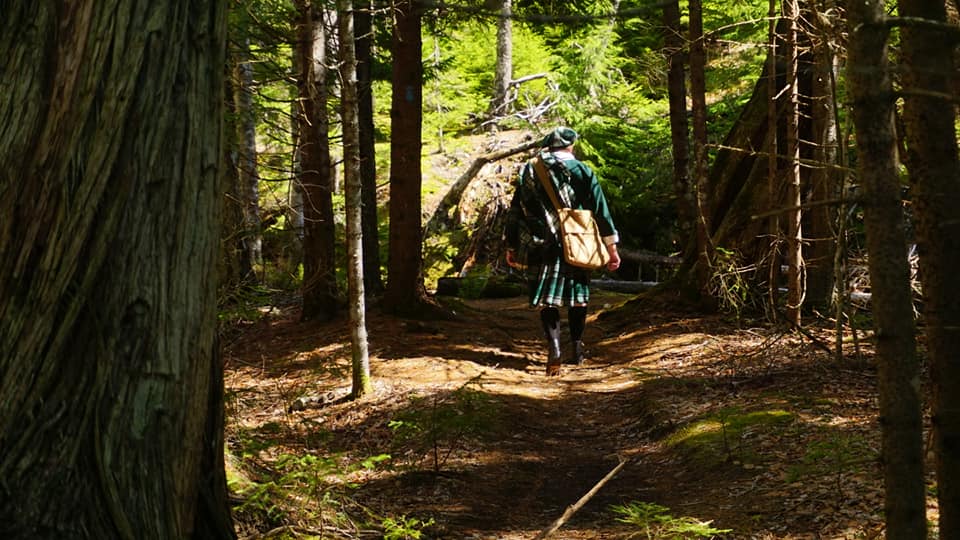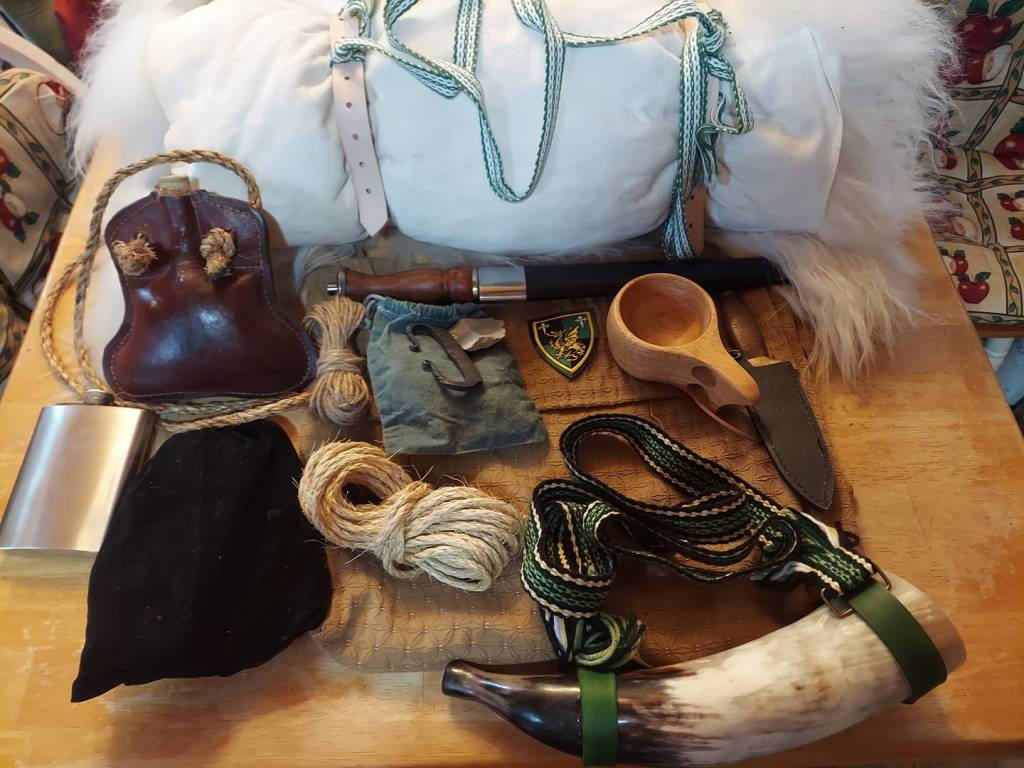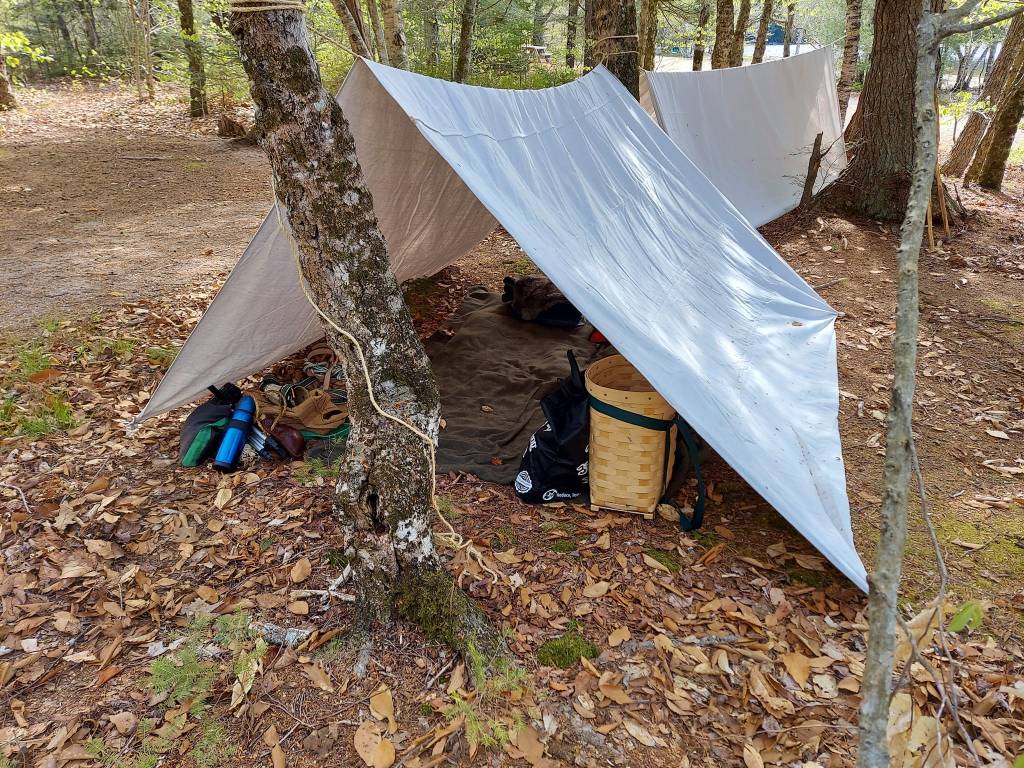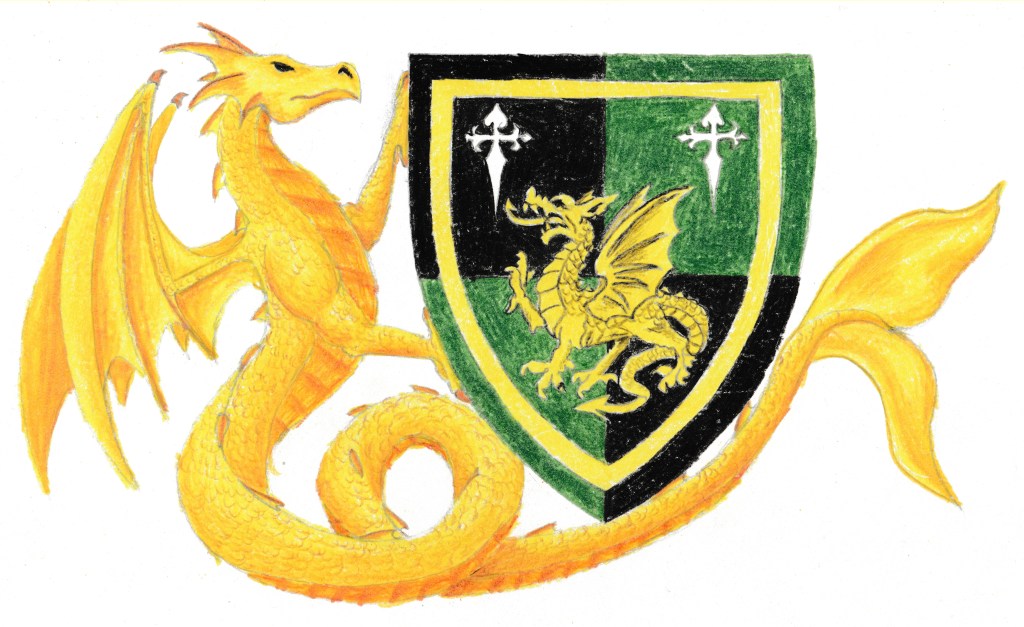
The Forester Guild promotes protection of “The Green” with a focus on outdoor living skills.
I focus my Forester activities into 3 distinct categories, skills, equipment and practical application.

Skills
What skills did Foresters use to do their job and survive in the wild. This includes the hunting horn and it’s calls, starting a fire, finding, preserving, and cooking food.
Equipment
For me this question is specific to a late period Scottish Forester. The Great Kilt is much more than clothing, it is a tool, used as shelter, bedding, protection from the elements and even camouflages. What did they have on them for life on the go? How did they use their tools to survive?



My kit pictured above is my first iteration and will be constantly improving. The bedroll is a wool blanket with a sheepskin on the outside. The woven belt ties onto the leather straps and when not slung over the back the belt is used for lashing camp poles or hanging items at camp. The leather flacket is based off a Mary Rose find and ropes are natural fiber, good for putting up a shelter or even fire starter if needed. Flint and steel in a beeswax coated pouch, wooden cup for oatmeal and drinks. The longer knife is my Dirk which works for self defense, chopping wood and cutting rope. The smaller knife goes into the messenger bag seen below these items and is used for food, carving and any assortment of smaller tasks. The hunting horn has leather straps and the Forester belt used as the shoulder strap. I usually carry a little brandy for those cold nights in the (non period) flask but inside the black bag is my modern cheat of a water purifying pump. Not shown here is the oak staff I made for walking, self defense and tent pole. I also carry a 9′ X 12′ 10oz. canvass wrapped around the bedroll.
Practical Application
Every spring I test my skills and equipment with 2 different events. The first is the Pilgrims Progress Challenge hosted by the Turnip of Terror and History Live Northeast. In honor of Chaucer’s Tales of Canterbury we must walk 67 miles in the month of April, the distance form London to Canterbury. These walks are a good way to get into shape, try out different garb configurations, trail foods and carrying equipment. These walks can be anywhere from 1 mile to 10 miles so it’s a great way to test it out before going on a multi day trip on foot. Secondly I do Feast of St. Corona in early May which is multi day trip with what I can carry. This started as an international event hosted by The Company of Saint George in Europe. When COVID hit and international borders were closed, for their annual pilgrimage event they challenged reenactment groups around the world to organize small local pilgrimages all to happen on the same weekend and post their stories on the web. I really enjoyed this and decided to continue doing the pilgrimage every spring as a test of my research and skills. I always welcome fellow travelers as long as they do so in period style to the best of their ability.

